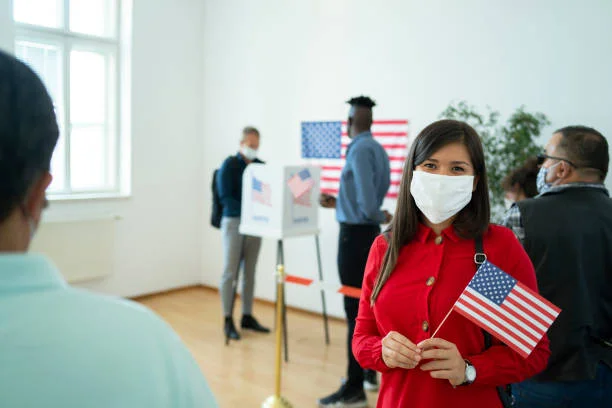Let’s be honest; working in the United States is a dream for a lot of people. And it’s not just about the money (though yeah, that’s a big part of it). It’s about better opportunities, a fresh start, and being in a place where your skills actually matter.
But here’s the thing. Getting into the U.S. to work legally isn’t a walk in the park. You need a job, sure but more importantly, you need a company willing to sponsor your visa.
In this year, there’s still a good shot for people with talent and drive to land a U.S. job through sponsorship. If that’s what you’re aiming for, you’re in the right place. Let’s break it down in a plain and simple way for you to get there easily.
What Is U.S. Visa Sponsorship?
So what does “visa sponsorship” even mean? Basically, it’s when a U.S.-based employer tells the government, “Hey, we want this person from outside the U.S. to come work for us because they have skills we need.”
They go through the paperwork, submit petitions, and handle the legal stuff that allows you to enter and work in the country. Without a sponsor, most work visas are off the table. No company = no go.
Employer’s Role in Sponsorship
Here’s what the employer actually does:
They start the process by filing a petition with U.S. Citizenship and Immigration Services (USCIS). They have to prove that:
- The job is legit
- You’re qualified
- They couldn’t find an American to do the job
- They’re going to pay you fairly
They also cover a good chunk of the fees, which is nice. But the bottom line is—your future depends a lot on them doing their part right.
Worker’s Responsibilities
Now don’t get it twisted—you’ve got work to do too. You’ve got to be upfront about your background, submit documents on time, show up for interviews, and stick to the rules once you’re in the U.S.
That means no shortcuts, no fake credentials, and definitely no ghosting on paperwork. If you do it right, the process goes a lot smoother.
Benefits of High-Paying Job Opportunities in the U.S. ($100K+ Salaries)
Let’s talk numbers. A lot of U.S. jobs—especially in fields like tech, finance, engineering, and healthcare—start at six figures. That’s $100,000 or more per year. Add bonuses, benefits, and stock options, and you’re looking at a pretty sweet life.
But money isn’t the only perk. U.S. jobs often come with things like:
- Health insurance
- Paid time off
- Retirement savings plans
- Remote work flexibility
- Career growth that actually goes somewhere
And let’s not forget—being in the U.S. opens doors you probably didn’t even know existed.
Eligibility Criteria for U.S. Visa Sponsorship
Not just anyone can get sponsored. You’ve got to check a few boxes:
- A real job offer from a U.S. company
- A background that fits the role (education or work experience)
- Good health and a clean criminal record
- Possibly, English language skills (depending on the job)
Also, some visa types require a university degree. Others might just need hands-on experience. It depends on the company and the job itself.
Types of U.S. Work Visas Sponsored by Employers
Here are some of the most common visas employers sponsor:
- H-1B: For skilled workers—think IT, engineering, etc.
- L-1: If you’re being transferred from a company’s foreign branch to its U.S. office.
- O-1: For people with extraordinary talent (yes, that’s the actual term)—artists, scientists, athletes.
- TN: For folks from Canada and Mexico, under trade agreements.
- EB-3: A green card option for professionals and skilled workers.
- EB-2: For people with advanced degrees or “exceptional” abilities.
Each one has its own rules, but they all give you a legal way to work in the U.S.
Step-by-Step Guide to Applying for a U.S. Work Visa
Here’s how the whole process usually plays out:
- Step 1: Get a job offer – Firstly, you will have to find a company willing to sponsor you.
- Step 2: Petition gets filed – Then, the employer submits paperwork to USCIS.
- Step 3: Approval or denial – If approved, you move on to the next step.
- Step 4: Apply for your visa – Usually at the U.S. embassy or consulate in your country.
- Step 5: Attend an interview – Answer questions, hand over documents.
- Step 6: Get your visa – If all goes well, your visa gets stamped.
- Step 7: Travel to the U.S. – Pack your bags—you’re heading to the States.
Key Documents Required for U.S. Visa Sponsorship
You’ll need to put together a bunch of paperwork. Don’t worry—it’s not as scary as it sounds. Here’s the usual stuff:
- A valid passport
- A signed job offer letter
- Form I-797 (approval notice)
- College degrees or certifications
- Proof of work experience
- Your resume or CV
- DS-160 confirmation page (visa application form)
- Passport photos
- Receipts for visa fee payments
- Anything else the embassy asks for
Keep everything organized. Missing one thing could delay your whole process.
Top Strategies to Find U.S. Visa Sponsorship Opportunities
Alright, here’s where the hustle comes in. You’ve got to be smart about your job search:
- Use job sites like LinkedIn, Indeed, or MyVisaJobs. Some listings even say “visa sponsorship available.”
- Target big-name companies that have a history of hiring internationally.
- Network like crazy. Reach out on LinkedIn, connect with people, attend webinars or virtual job fairs.
- Go for internships first. Sometimes, they turn into full-time offers with sponsorship.
- Use alumni or school career services if you studied in the U.S.—they often have employer links.
Lastly, don’t just spam your CV everywhere. Be intentional. Focus on roles that match your background.
Top Companies Offering Visa Sponsorship for Foreign Talent
Want a shortcut? Here are some U.S. companies that regularly sponsor international workers:
- Amazon
- Microsoft
- Apple
- Meta (Facebook)
- Deloitte
- PwC
- Intel
- Tesla
- Oracle
These giants hire thousands of workers from around the globe. They know the process and have legal teams to handle sponsorships.
Frequently Asked Questions
Here are answers to some common questions people normally ask regarding visa sponsorship opportunities in the United States.
Q: Can any company sponsor me?
A: Not really. Only companies that are registered and willing to handle the paperwork can do it.
Q: How long does it take?
A: It varies. Sometimes a few months, sometimes longer—especially for H-1B visas that are capped annually.
Q: Can my family come too?
A: In most cases, yes. Your spouse and kids under 21 can come on dependent visas.
Q: What if my visa is denied?
A: You might be able to reapply or appeal. It depends on the reason for the denial.
Q: Do I need a lawyer?
A: Not always, but it helps. Especially if your case is complicated.
Conclusion
Look, getting a U.S. job through visa sponsorship isn’t easy — but it’s totally doable. If you’ve got the skills and a bit of patience, there’s no reason why 2025 or 2026 can’t be your year.
The key is to stay informed, stay prepared, and don’t give up. That one email or interview could change your whole life. So polish that resume, put yourself out there, and start aiming for those U.S. opportunities.
Your American dream? It might just be one application away.
We wish you all the best and hope to see you in the US soonest!







